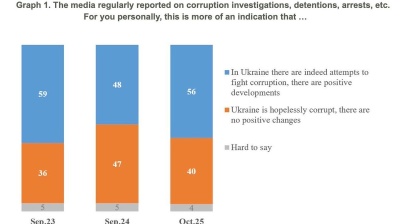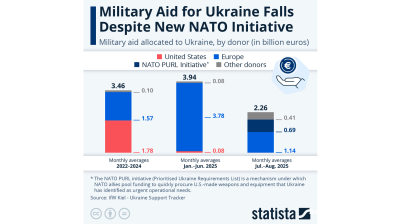Central European manufacturing purchasing manager indices (PMI) remained robust in June, according to data released on July 3. However, the results were less impressive than forecast.
Poland’s reading was the only one in Visegrad to rise, while the Czech PMI remained flat. Hungary’s result dropped, but unlike the others, the locally-compiled index is viewed as a poor guide to eventual industrial output.
While all three indices persist in sitting above the 50-point threshold separating expansion from contraction, the performance in the sixth month of the year is somewhat disappointing. The market had expected strong gains driven by continuing strength in the Eurozone, which is the source of the majority of demand for the region’s small and open export-led economies.
Confidence and activity in the single-currency area remain strong. June’s PMI reflected that as it rose 0.4pp on a monthly basis to a 74-month high of 57.4. The German reading of 59.6 represented a similar six-year record. Visegrad factories play a significant role in the German supply chain.
“There’s no sign of the impressive performance [in the Eurozone] ending any time soon,” says Chris Williamson, chief business economist at compiler IHS Markit. “Optimism about the year ahead has risen to the highest for at least five years, backlogs of orders are building up at the fastest rate for over seven years and factories are reporting near-record hiring as they struggle to deal with the upturn in demand. As such, the manufacturing sector is clearly in expansion mode and looks poised for continued robust growth in coming months.”
That’s clearly good news for Central European factories. The performance of the region’s export sector helped push GDP growth to levels that surprised most. While high-frequency data thus far in Q2 suggests a slight slowdown, the economies look set to record another strong three months.
“Eurozone manufacturing growth gained further momentum in June, rounding off the best quarter for just over six years,” continues Williamson. “At current levels, the PMI is indicative of factory output growing at an annual rate of some 5%, which in turn indicates the goods producing sector will have made a strong positive contribution to second quarter economic growth.”
The PMI data for the region in June reflects the high-frequency data, suggesting activity remains robust, but likely a little slower than in January-March - albeit, the growing labour shortage remains a growing concern. The momentum looks set to continue, however. “Based on past form, June’s PMI data are consistent with Central European industrial production growth of around 8% y/y in Q3,” write analysts at Capital Economics.
Poland’s PMI expanded 0.4 points to 53.1 in June, remaining well above the historical average of 50.5. The rise was a return to form after a fall the previous month.
The reading follows solid data on industrial production in May. Output recovered from a slowdown in April to expand 6.5% y/y in seasonally adjusted terms.
The result is a good signal for GDP growth, which surged to 4% y/y in the first quarter. With retail sales also going strong and Poland’s ESI reaching the highest point in nine years, the outlook for the second quarter has improved. However, the results through April-June thus far suggest growth will be a little weaker in the second quarter.
“[The PMI reading indicates] that growth momentum will be carried forward into the second half of the year. The latest survey results support IHS Markit’s forecast of 3.6% y/y GDP growth in 2017,” IHS Markit economist Sam Teague said.
The Polish PMI remains above the 50-point threshold for the 33rd consecutive month. “Strong rises in output and new orders both contributed to the latest upturn,” the report notes. “In addition, June’s data continued to signal growth in employment and new export orders, albeit at slower rates than in the preceding survey.”
Indeed, the difficulty of finding skilled labour is becoming more and more of a stress across the region, and is trimming the expansion rate of employment. The Slovak prime minister claimed in May that the issue is reaching “crisis” proportions.
The Czech Republic has the worst of it, with unemployment dropping to a new low of just 3% in May. Employment growth in the manufacturing sector pushed to the strongest level since March, according to the IHS Markit survey.
Czech manufacturers reported the strongest increase in backlogs since July 2011. Growth in new orders and insufficient capacity were cited as reasons for the rise in work-in-hand. That is likely to contribute to a deceleration in overall growth.
“The June PMI signalled a continuation of the strong growth seen throughout the first half of 2017, although overall expansion was slightly softer than the first quarter,” notes Sian Jones from IHS Markit.
The headline PMI reading was stuck at 56.4, which was significantly lower than the consensus expectation of a rise to 57.2. That was despite continued strong gains in output and new orders. At the same time, pricing pressure dropped to its slowest pace so far in 2017, although the rate of input price inflation remained steep. Those trends are likely the result of the fading effect of stabilised oil prices as the low 2016 base runs out.
Hungary's PMI reading was the only one in Visegrad to slow in June. Although it remains at elevated levels, the index dropped a full 4.9 points to 57.2, the Hungarian Association of Logistics, Purchasing and Inventory Management (Halpim) announced.
Hungarian manufacturing clearly remains robust. The June average for the last three years sits at 53.1 points, and the index has now signaled expansion for 22 straight months. However, the locally-compiled survey is not seen as a reliable guide to eventual industrial output, and activity continues to show erratic tendancies.
The sub-indices of new orders and employment fell from monthly highs in May. But still the import and export measures expanded for the 24th and 23rd straight months respectively, signalling further growth in trade.
Data

Ukraine’s credibility crisis: corruption perception still haunts economic recovery
Despite an active reform narrative and growing international engagement, corruption remains the biggest drag on Ukraine’s economic credibility, according to a survey by the Kyiv International Institute of Sociology.

India’s retail payment revolution
India’s payments landscape has reached a pivotal stage, with digital transactions now accounting for 99.8% of all retail payments.

Military aid for Ukraine falls despite new Nato PURL initiative – Statista
The Kiel Institute for the World Economy found that military aid to Ukraine dropped sharply in July and August compared to previous months, despite the implementation of the Nato PURL initiative.

IMF cuts Russia’s 2025 growth forecast to 0.6%, leaves Ukraine's unchanged at 2%
The International Monetary Fund has lowered its forecast for Russia’s economic growth in 2025 to just 0.6%, marking the second-steepest downgrade among major economies, even as it raised its global outlook.




